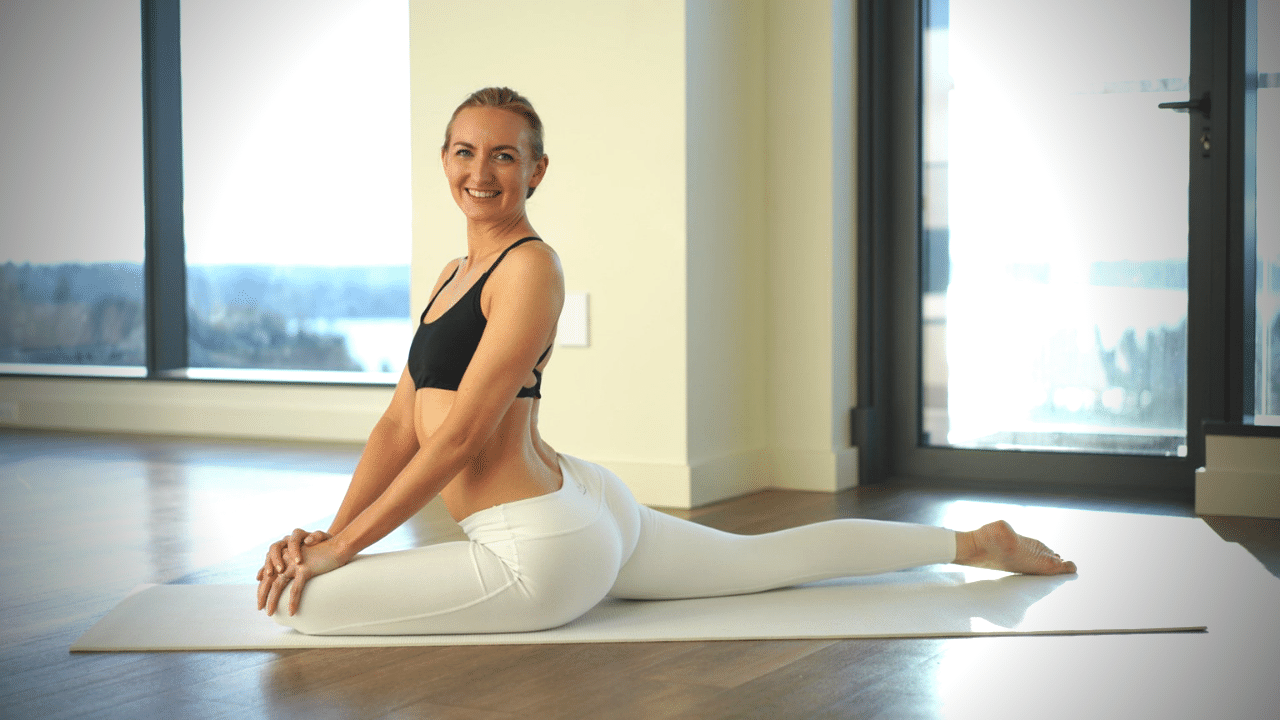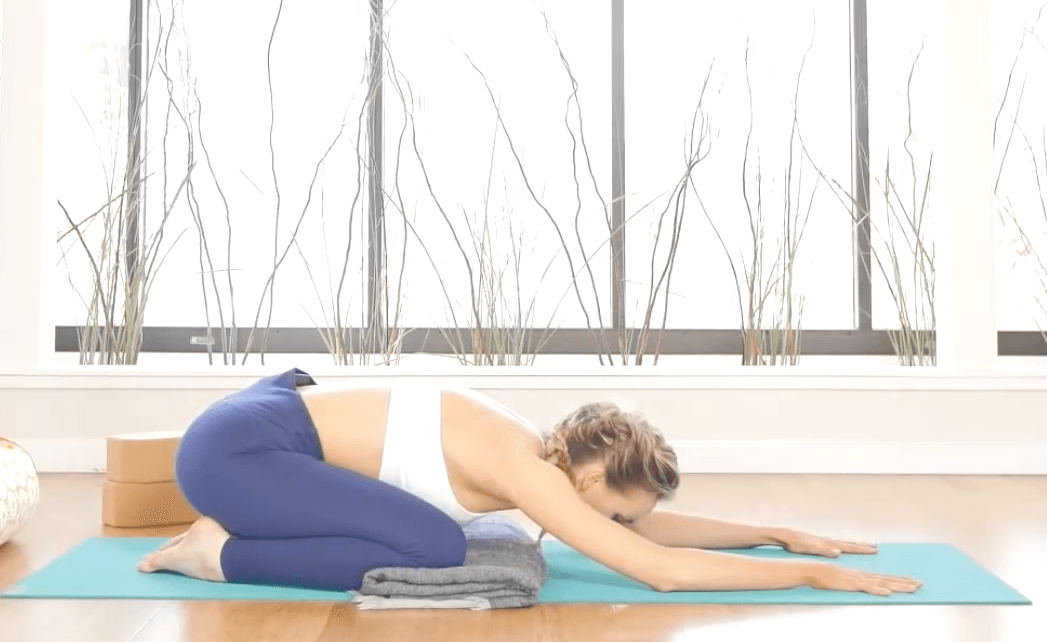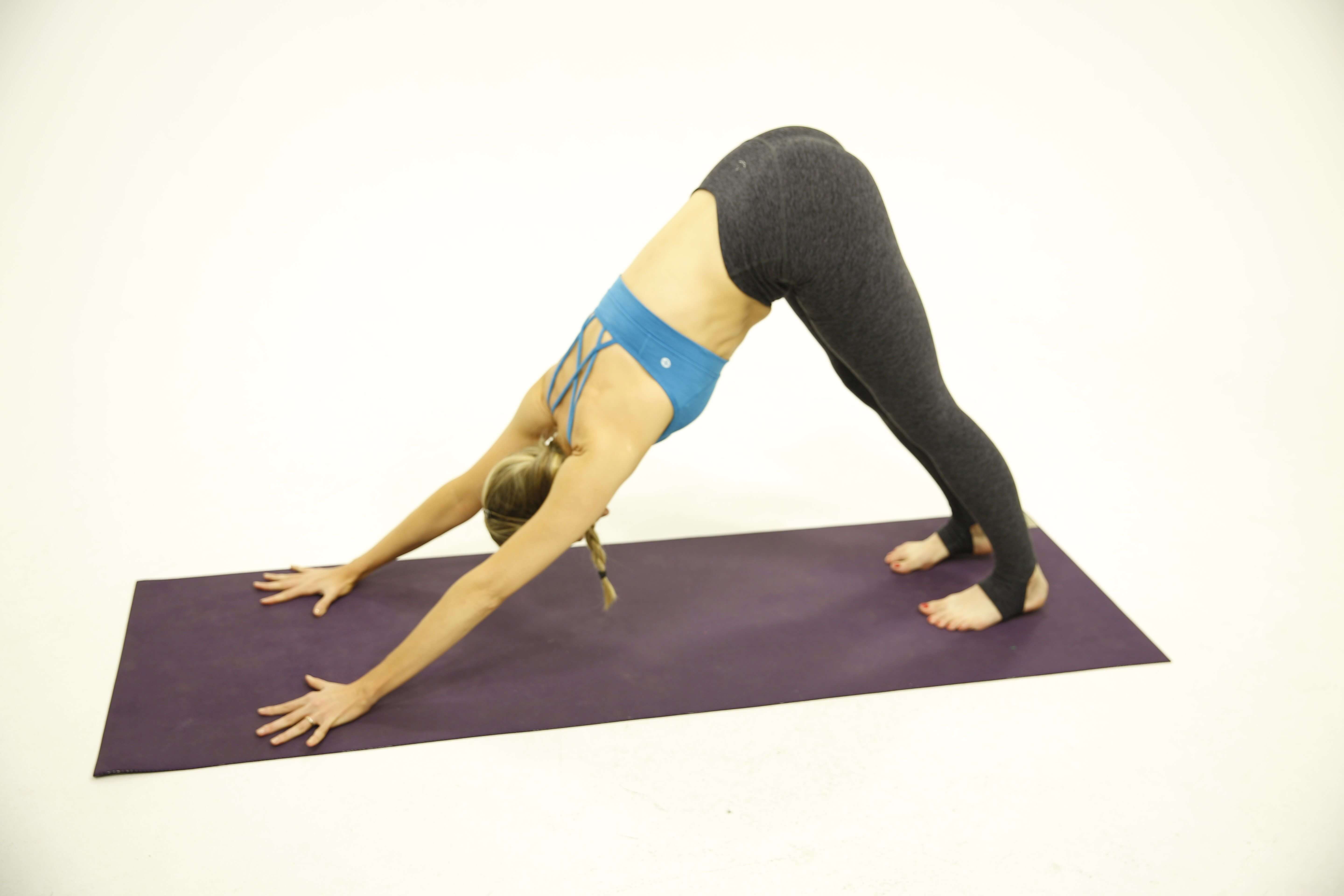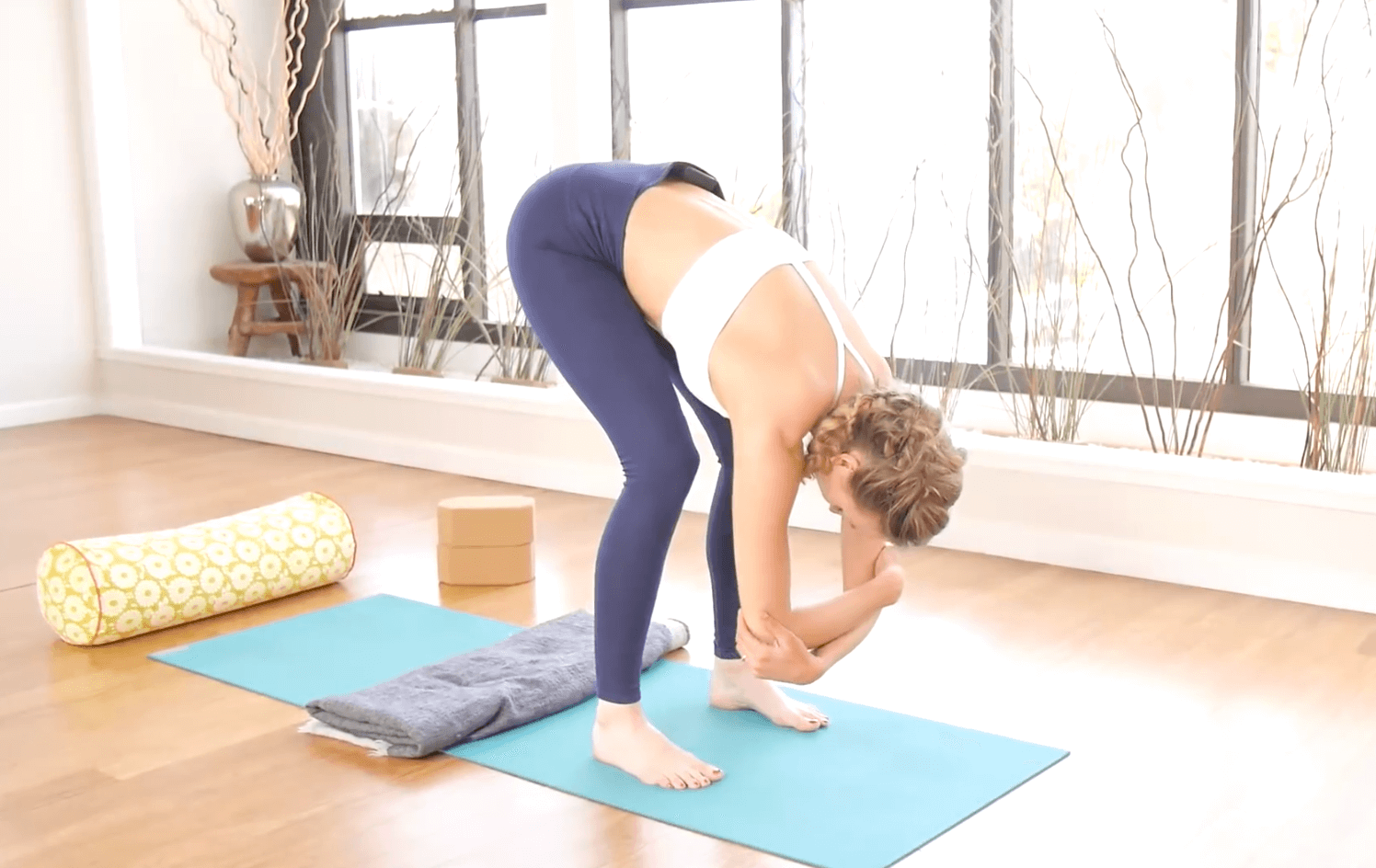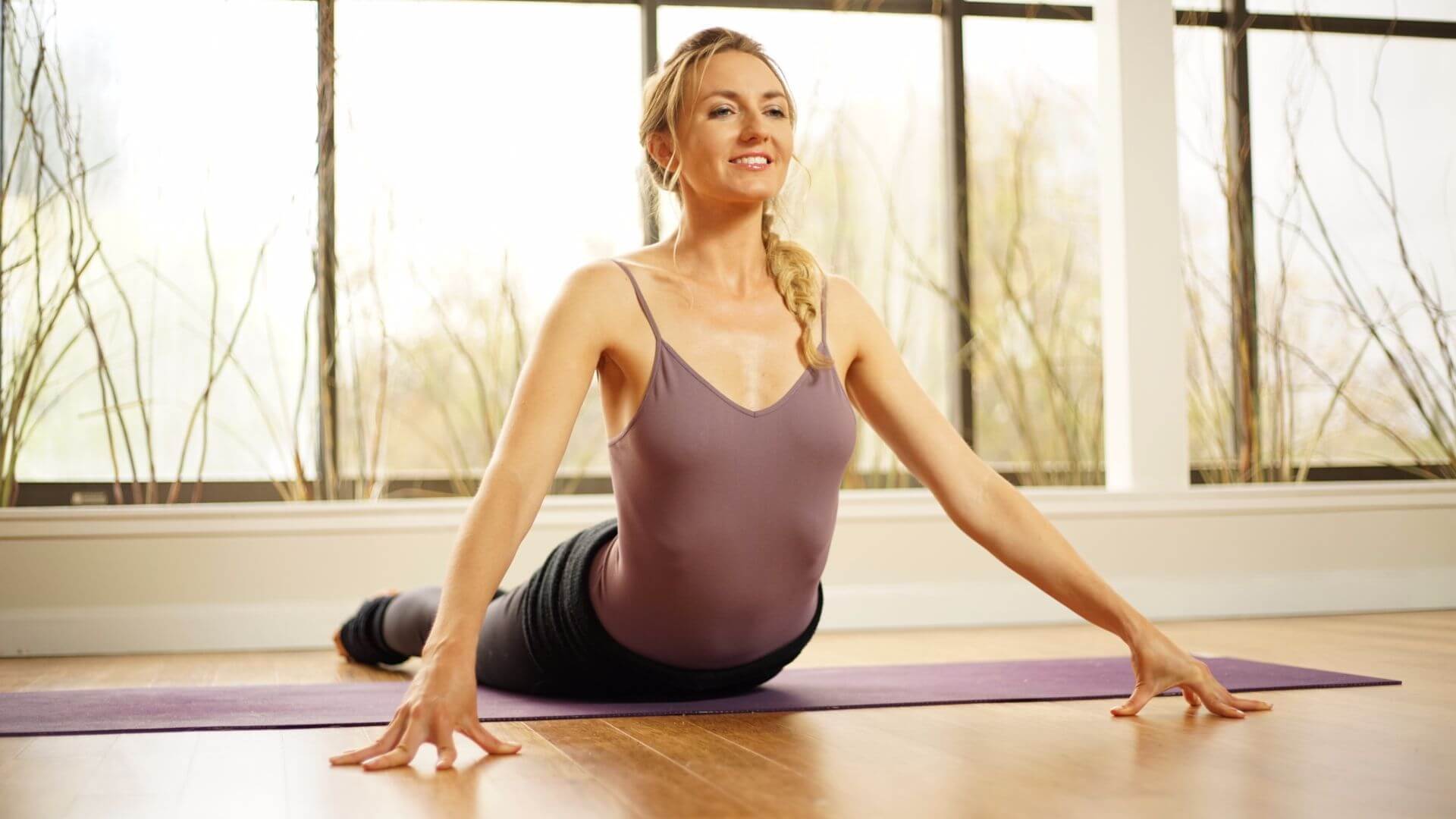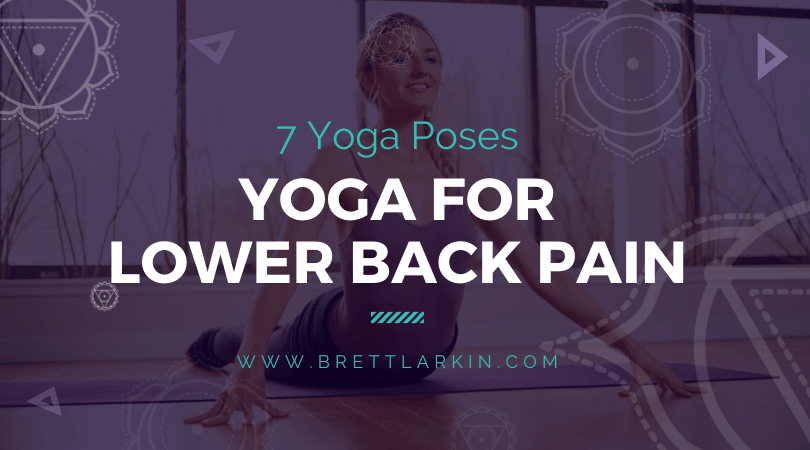
As a yoga instructor, one of the most common complaints I hear from my students is back pain. This makes sense because, according to the American College of Physicians, lower back pain is one of the most common reasons for all doctor visits in the U.S.
Whether it’s the result of an injury or just poor posture, chronic back pain can be debilitating and severely impact our lives.
The good news is that certain yoga postures can significantly help.
In fact, a regular yoga practice can help with pain in the back (and the entire body).
No, I didn’t drink the Kool-Aid. (LOL)
The truth is that yoga exercise strengthens and lengthens both the lower and upper body, including the entire back. And since poor posture (aka lazy muscles in the cervical, thoracic, and lumbar spine) is the main cause of most back pain, a regular yoga practice may be the perfect antidote.
Even the most simple yoga pose can help alleviate some of the pain caused by sitting for too long (um, hello, child’s pose).
So grab your yoga mat and get into downward dog. These yoga postures will help you correct poor posture and alleviate any pain in the lumbar spine region.
What Types of Yoga Are Best for Lower Back Pain
Let’s start by looking at which styles of yoga are best for easing lower back pain. Certain types of yoga are better suited for this, so you want to make sure that your yoga practice is going to help heal your body, not hurt it.
Avoid very active and intense styles and instead, focus on more passive styles. You will want to focus a little bit on strengthening the core muscles, but most of your focus will be on stretching and breathing into the area of the low back.
- Restorative yoga – Restorative yoga includes the use of props and longer holds of the postures. The main focus of this practice is to relax into the posture. It is meant to center the body and bring it into alignment. The longer holds give your body the opportunity to reset and realign. This is especially helpful for spinal health.
- Yin yoga – Often confused with restorative yoga, yin is actually quite different. While restorative yoga relies heavily on props, yin yoga does not. Yin yoga is a passive practice that incorporates long holds for the purpose of getting deep into the muscles and fascia of the body. Yin yoga also uses the knowledge of meridians (energy channels) in the body to stimulate the flow of energy and eliminate any blockages. Yin yoga can help you to really get deep into the fascial tissues of the low back and get to the root of the issue.
- Hatha Yoga – Depending on which yoga teacher you practice with, a Hatha Yoga class will focus on building strength and flexibility. Hatha Yoga sequence typically has longer holds, which builds strength. Even a simple yoga pose held for a couple of minutes can build muscle! If you are relatively fit and have an established yoga practice, then this style of yoga will help strengthen your back muscles.
7 Best Yoga Poses For Lower Back Pain
When thinking about healing back pain, consider focusing your attention on the entire torso, not just the back. Building core strength can make a huge difference in healing back pain. Stronger core muscles help to stabilize the body and support the muscles of the back, which can significantly reduce back aches and even a sore neck.
While all bodies are different and some people have lower back pain for medical reasons, yoga poses that support the low back will do the trick for most of us.
That being said, when using yoga as a tool for healing back pain, you’ll want to focus on certain postures and pay special attention to the alignment.
However, you don’t have to adopt an entire practice or do a full Surya Namaskar flow every day to reap the benefits. Simply doing a few yoga postures each day can help to foster a more healthy back. Here are some of my favorite postures to teach and practice.
1. Bridge Pose – Setu Bandhasana
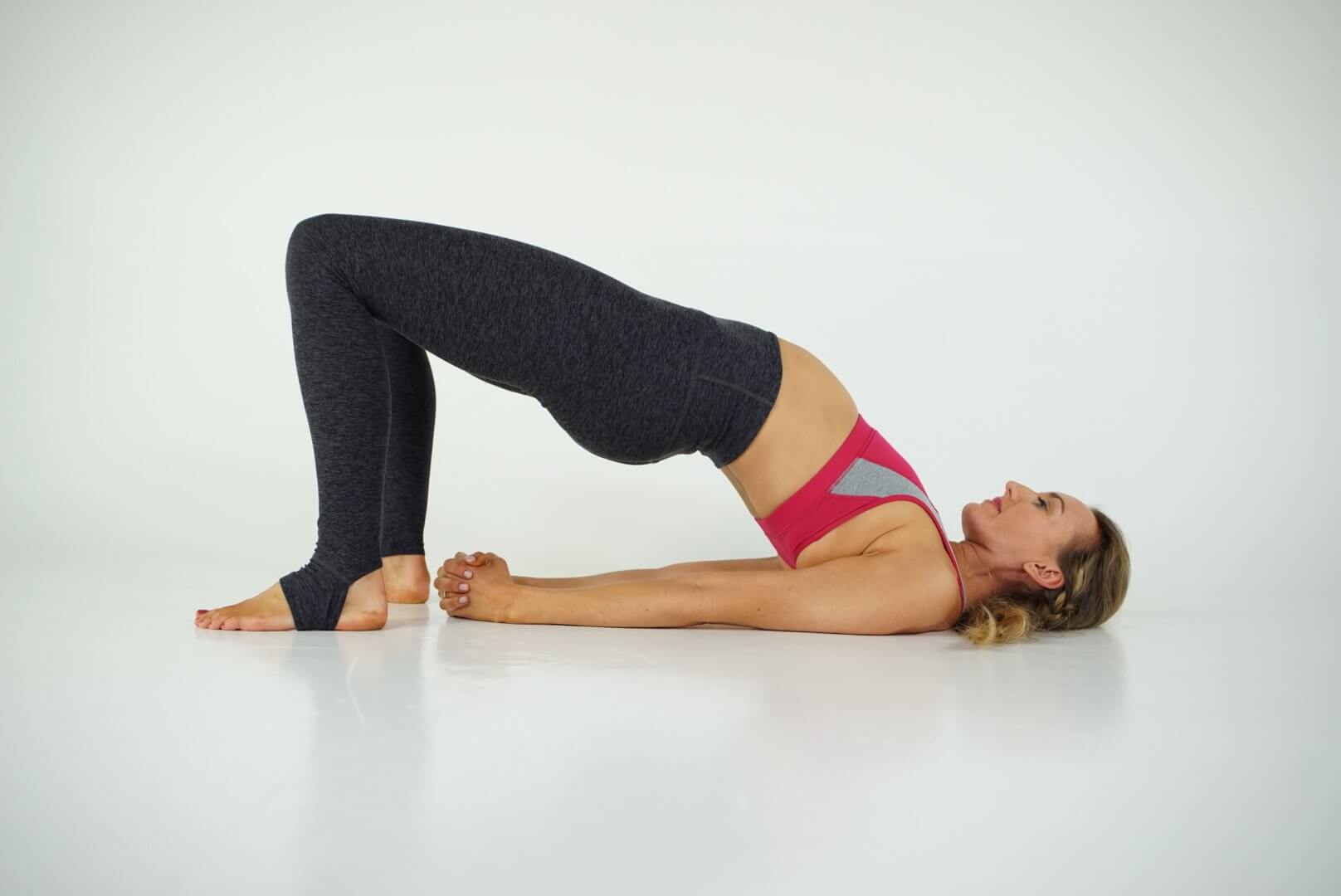
How to do it
Lie on your back with knees bent and feet planted hip-distance apart. Keep the arms along your side and press into the feet as you inhale and lift the hips. You can link your hands together under your hips, opening the shoulder area. Lift the spine, aiming for the chest to meet the chin. Keep the breath deep and steady. Focus on keeping the feet planted firmly and the quadriceps engaged. This can also be made into a restorative posture by placing a yoga block underneath the sacrum.
Benefits
Bridge pose opens the chest and shoulders. It gently stretches the hip flexors, which is important for someone who sits all day. This posture is a great way of strengthening the muscles in the back of the body, the legs, and the buttocks.
2. Cat/Cow – Marjaryasana/Bitilasana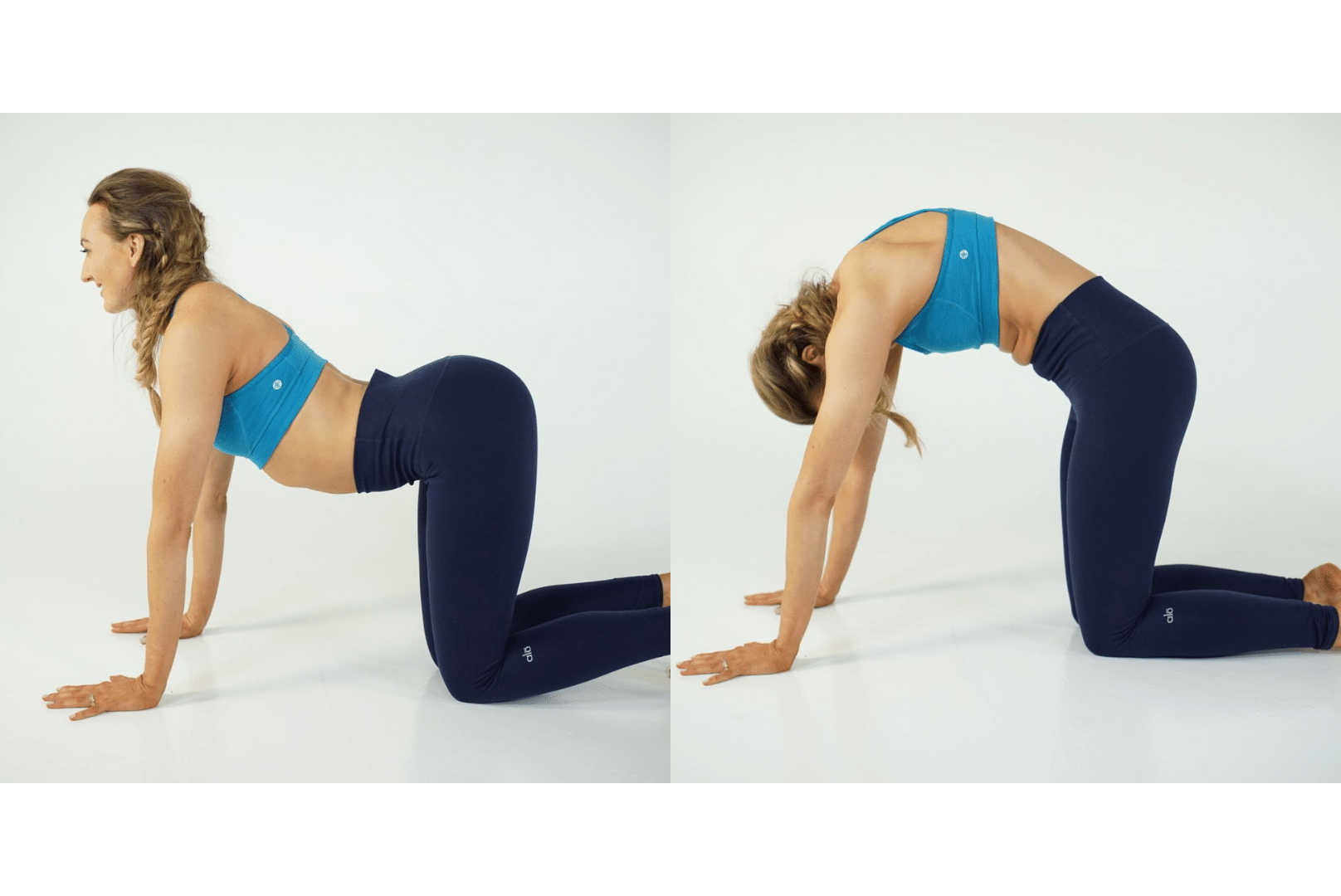
How to do it
Ok so this is technically two poses, but it’s great for spinal health so I wanted to include it here. To start, come into a tabletop position with the hands underneath the shoulders and knees underneath the hips.
On an inhale, drop the belly but keep the abs engaged. Open the chest, sending the heart forward and the shoulders down and back. This is cow pose. Use the muscles of your lower back to send your tailbone toward the ceiling. On an exhale, round the back, drop the head, and tuck the tailbone. This is cat pose. Repeat the postures, linking the breath to the movement. I suggest closing the eyes to really feel into the body.
Benefits
Cat/cow is the perfect way to warm up the spine and work through any tightness. These postures help to open up the chest and shoulders. They also help increase flexibility in the spine which improves overall spinal health. I suggest doing this every morning to awaken and warm up the spine.
3. Pigeon pose – Eka Pad Rajakapotasana
How to do it
Start on hands and knees. On an exhale, bring the right knee forward toward the right edge of the mat, behind the right wrist. Angle your right shin so that the right foot rests in front of the right knee. The closer to parallel that your shin is to the front edge of the mat, the deeper the hip stretch will be. Keep the back leg straight and active behind you. Settle into the pose and use the breath to create space in the hips. You can choose to stay upright or relax the torso over the front leg. If this variation is too intense for you, you can do a reclined pigeon while laying on your back. Switch sides to stretch the left hip.
Benefits
Pigeon pose is a great (and sometimes intense) hip opener, so it’s especially beneficial for those with tight hips. It creates space in the hip joints and lengthens the hip flexor. It stretches the piriformis muscle and can help with sciatic pain. The muscles and nerves of the low back are so closely connected to the legs and hips, so opening up the hips can help to alleviate pressure and relieve pain in the back as well.
Make your yoga practice 2x more potent in HALF the time (usually $47) FREE 👇
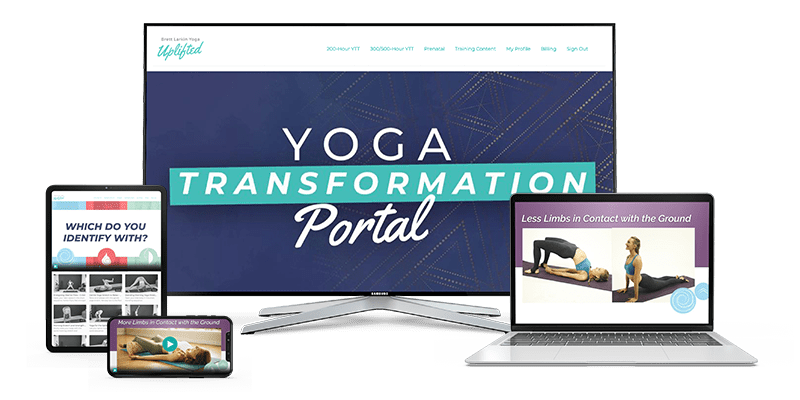
Make your yoga practice 2x more potent in 1/2 the time. FREE two-hour Yoga Transformation Portal (usually $47) [Claim it Free Here]

4. Child’s Pose – Balasana
How to do it
Kneel on your mat with the knees hip-width apart and toes together. On an exhale, fold the torso over the thighs and reach the arms long in front of you. Lengthen your neck and spine by drawing your ribs away from your tailbone and the crown of your head away from your shoulders. Breathe deeply into the lungs, feeling the breath soften any tension in the lower back.
Benefits
Child’s pose is a resting pose that stimulates the parasympathetic nervous system. It is great for coming back to the breath and the body. It stretches and strengthens the back muscles and separates the individual vertebrae from each other. Often, nerves stemming from the spinal cord are squeezed by these discs, causing all sorts of back problems. This simple posture helps to relieve this problem and encourages the discs to move back into alignment.
5. Downward Facing Dog – Adho Mukha Svanasana
How to do it
To get into downward facing dog, begin in tabletop position, place the hands slightly forward of the shoulders, tuck the toes and straighten the legs. Press down firmly through the hands and feet. Lift the sits bones toward the ceiling, lengthen the legs and press the thighs back. If you cannot straighten the knees in downward dog, that’s okay. Simply focus on lengthening and stretching the spine and lower back muscles. The weight should be evenly distributed between the hands and feet. Rotate the forearms internally as the upper arms rotate externally. Keep the breath slow and steady.
Benefits
Downward facing dog is a core yoga pose that helps to strengthen the entire body. It stretches the hamstrings and the lower back. The lengthening action creates space between vertebrae in the spine. Because this is an inversion, circulation is stimulated, especially in the upper back.
6. Standing Forward Fold – Uttanasana
How to do it
To get into standing forward fold, start in mountain pose at the top of the mat. On an exhale, fold forward hinging from the hips and keeping the spine long. Place the fingertips on the shin, the mat, or on a yoga block. Draw the shoulders down the back, away from the ears. Allow the crown of the head to release towards the floor. Keep the legs and abdominals engaged while you breathe deeply and steadily.
Benefits
Uttanasana stretches the hamstrings, lower back, and entire spine. Since it is a mild inversion, it can help to reduce blood pressure and soothe headaches. The weight of the head helps to lengthen the spine and relieve any pressure between the vertebrae of the spine.
7. Cobra Pose – Bhujangasana
How to do it
Lie on your stomach and take both hands underneath the shoulders. Keep the elbows tucked in to the sides and press the hip points into the ground. Push down through the tops of the feet and engage the legs so much that the kneecaps lift off the floor. On an inhale, press into the hand, engage the core, and lift the chest forward and up. You can straighten the arms as much as is comfortable for you. You can even leave the forearms on the floor for a sphinx pose. Send the shoulder blades down and back and lengthen the spine. Take deep breaths through the full length of the spine. Be sure to keep the abdominal muscles engaged in order to protect the lower back.
Benefits
This asana improves and deepens breathing. It can help to alleviate backache and keep the spine flexible and healthy. Cobra not only builds strength in the back muscles but the core muscles as well.
The next time you are feeling some low back pain, I encourage you to roll out your yoga mat instead of reaching for the aspirin.
If you’re looking for more back pain yoga routines, then there are a lot of great yoga videos on YouTube. Some yoga instructors may even have a dedicated exercise program with a set yoga calendar listing out which poses to do each day. This can be a great way to start a yoga practice in the comfort of your own home.
The truth is, yoga for lower back pain is really just yoga. All yoga poses will ease lower back pain when practiced regularly, as will regular exercise.
Whether you go to a yoga class with your favorite yoga teacher, follow along with your favorite yoga videos, or create your own yoga sequence at home, a regular yoga practice will help reduce lower back pain. So grab your yoga mat and begin stretching!
Want more yoga pose tutorials? See more in my Yoga Pose Directory.
Next Steps
- Check out my YouTube channel and find some yoga classes that you can try out for yourself!
- Download my Yoga Calendars for an at-home practice, guided by me on YouTube!
- Join Uplifted for exclusive content that you can access right from the app. Take a deep dive into your practice with me this year!
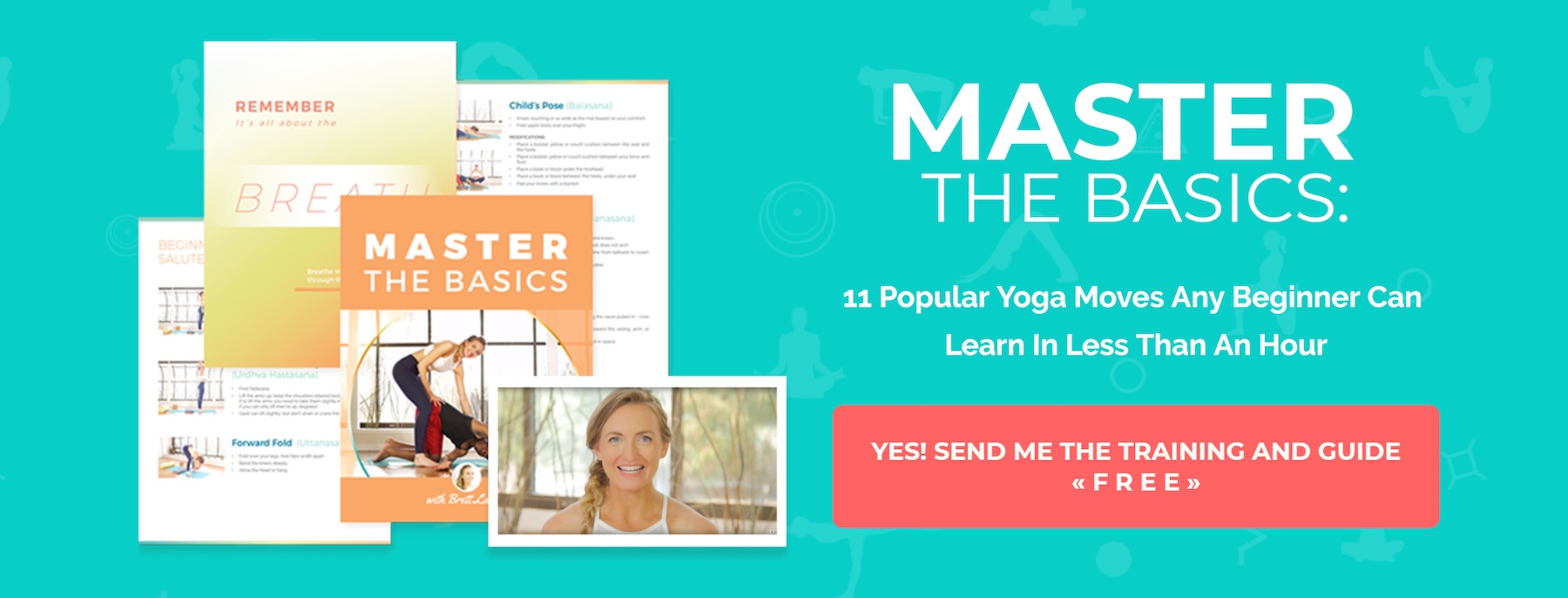
Learn how to do 11 of the most popular yoga poses correctly. Free video + PDF download.

Find more yoga sequences by benefit.
YOU MIGHT ALSO LIKE
- How to Teach Somatic Yoga: A Practical Guide for Instructors
- The Best Somatic Exercises for Grief: Find Healing Through Movement
- The Best Somatic Exercises for Anger Management and Emotional Release
- Authentic Pathways: Connecting With Higher Self for Inner Peace
- Yoga to Reconnect with Yourself: 5 Essential Practices for Inner Peace
- Yoga for Connection: 10 Poses to Deepen Relationships and Bonding
- Yoga To Connect With Your Body For Mind-Body Harmony
- Yoga to Connect with Feminine Energy: 5 Transformative Practices
- Yoga to Connect with Your Heart: 3 Poses for Emotional Balance
- Myofascial Release Yoga: Unlock Tension and Improve Flexibility
- 6 Hip Openers For Emotional Release
- Office Yoga: 10 Poses You Can Do Right Now
- Ayurveda Food Combining: The Key to Balanced Digestion
- Yoga For Grief: 8 Yoga Poses For Support
- Yoga for Vata Dosha: Practice Poses and Tips
Learn how to do 11 of the most popular yoga poses correctly. Free video + PDF download.


